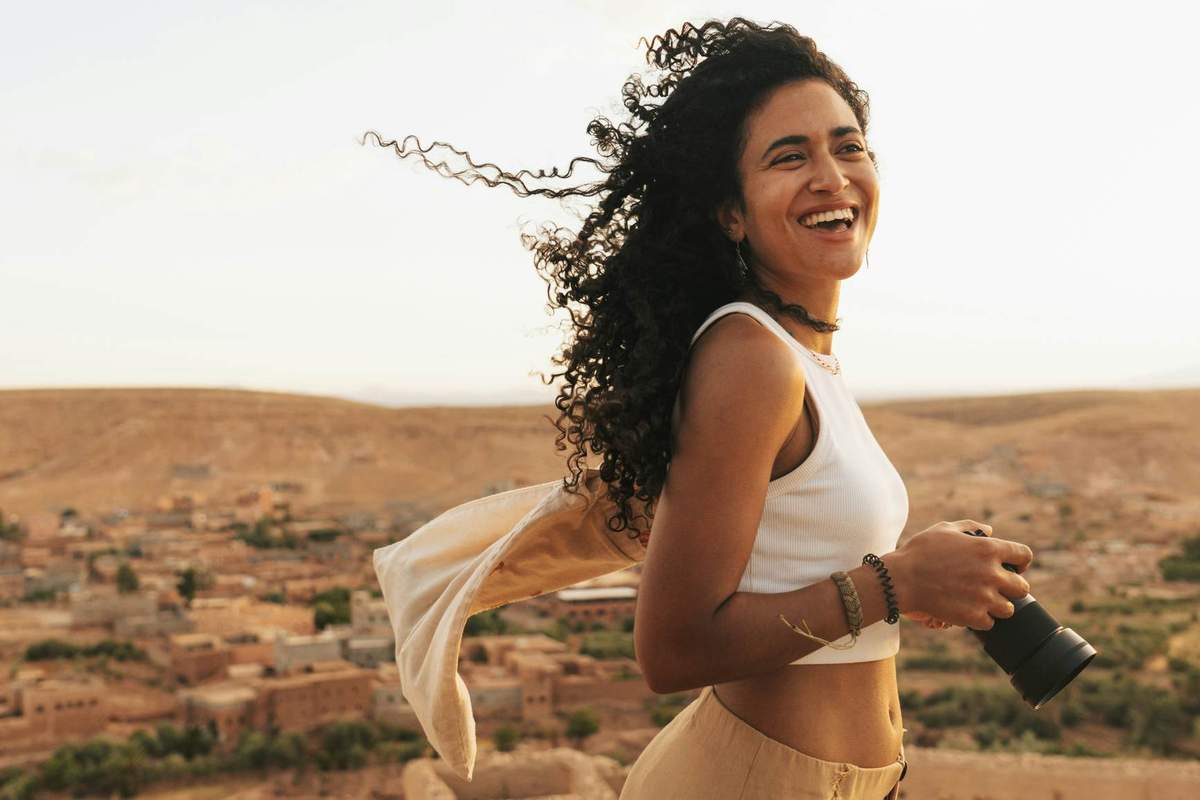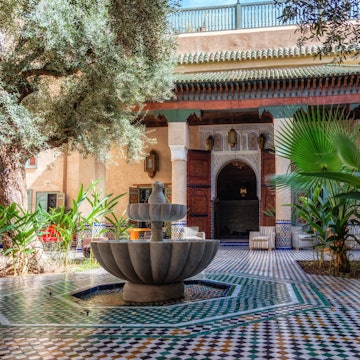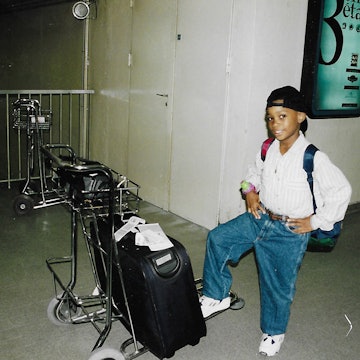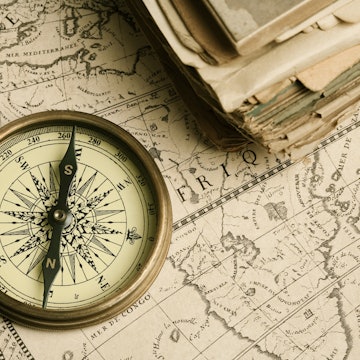
Essential Moroccan experiences you won't want to miss
Dec 10, 2019 • 7 min read

Souks and hammams have both long been a part of everyday life and public space in Morocco, and are bursting with something for all the senses © Neil Farrin / robertharding via Getty Images
Travel to the Kingdom of Morocco and you’ll encounter the thousands of years of history that dwell alongside the fast-paced lifestyles of the new millennium. From ancient medinas and Arabic dialects to bustling cities like Tangier and modern movie magic on desert studio lots, Morocco blends old and new in a way that always feels fresh.
Morocco rests atop of the African continent, right next door to Europe’s Iberian peninsula. Additionally, it is the western edge of the MENA (Middle East and North Africa) region, hence the significance of its name – Morocco means “the west”, and likewise, the country is a fusion of the intersecting cultures and geography which collide in this corner of the world.
Whether it’s your first time to the Western Kingdom or a return visit, you’ll always find something new to experience. Here are 10 of our absolute favorites.

Outdoor enthusiasts will love mountains, beaches, and deserts
If you're the kind of traveler who prioritizes a destination’s natural wonders, Morocco has a vast number of regions to explore, from the Atlas Mountains to the rock archway of Legzira Beach. You can hunt for fossils in the western Sahara or observe the unique ecosystems at the oasis near Ouarzazate to the south.
Trace the steps of a Greek demi-god in Cave of Hercules near Gibraltar, or head to Friouato Cave to take a dip in an underground river in Tazekka National Park east of Fez. You’ll see everything from goats perched high in olive trees to Catcus Thiemann, the world’s largest cactus farm north of Marrakech.

Morocco’s resplendent tombs
Morocco has been home to humankind for at least 300,000 years, and unsurprisingly, that long history has resulted in many tombs and cemeteries well worth a visit. Some of them are very intricate and beautiful, such as the lavish Saadian Tombs or Mausoleum of Mohammed V, and the recently renovated Mausoleum of Moulay Ismail. Others, like the 14th century ruins of the Merenid Tombs or Miaara Cemetery – the largest Jewish burial ground in Morocco – are fascinating places to learn more about Morocco’s past and myriad of cultures.

Ancient ruins
While cities like Tangier and Rabat boast contemporary wonders like one of the fastest bullet trains in Africa and the Mohammed VI modern art museum, you can never quite escape the past in Morocco. Not far from the city of Meknes you’ll find the Roman ruins of Volubilis, a predecessor city dating back to around the second century AD that is now a Unesco world heritage site.
Volubilis is one of many archeological treasures peeking out from corners all over the country, like the Phoenician settlement of Lixus, dating back to the 7th century. The Roman historian Plinius claimed Lixus was home to the mythological garden of Hesperides, where according to myth Hercules stole the golden apples of knowledge.

The medinas of Morocco
Even if you’ve never visited Morocco, you’ve probably heard of medinas, or the oldest historic quarters of many cities throughout the Arab world. Stepping into the medina is like taking a walk back in time, though these districts are still very much a part of everyday life in Morocco.
The medina of Fez, also known as the Fes Al Bali, is home to mosques, ancient buildings, and the Kairaouine University. Kairaouine is the oldest higher education institution in the world, and has been in continuous operation since the year 859. While it’s not the only historic district in the city or even in Morocco, the medieval medina of Fez is a Unesco World Heritage site, and for good reason.

So are the medinas of Tetouan and Marrakech, which both have their own charms. Tetouan is especially untouched by time, and has ties to Spanish Andalucía, while the Marrakech medina is sometimes called “The Red City” for its warm ochre walls.
Perhaps the most picturesque medinah in Morocco is that of Chefchaouen – a labyrinth of vibrant blue walls set in the countryside near the Rif mountains. Regardless of which medina you choose, finding the kasbah (a central fortified watchtower) is usually easier than finding the way out.

Moroccan mosques
Morocco’s historic mosques are architectural gems as well as centers of spiritual and community life. The Hassan II Mosque in Casablanca, for instance, is one of the world's largest mosques and is built on both land and sea. The Spanish Mosque in Chefchaouen was built, as the name implies, by the Spanish during a period of colonization in the 1920s, but the mosque was quickly abandoned after construction. Today it serves primarily as a hiking landmark from which the blue city is best viewed.
Another nearly-abandoned mosque is the Hassan Tower in Rabat. The 12th-century minaret was intended to be part of the largest mosque in the world, but the project was never finished. Even the Kairaouine University in Fez has a mosque as part of its historic campus. While many active mosques are off-limits to non-Muslims, there are myriad older or incomplete mosques in Morocco which are open to tourists and house stories well worth discovering.

Gnawa music
Originally from West Africa, Gnawa is a trance-inducing genre of music that feels spiritual and organic. Gnawi musicians are respected artists who incorporate poetry and dance in their moving performances. The music brings crowds to the small town of Essaouira every year at the Gnawa World Music Festival. The event is a must for anyone seeking opportunities to have deep connections with nature and others through art.

Atlas Film Studio
In Ouarzazate, Atlas Film Studio is the world’s largest movie studio, where memorabilia from Star Wars, The Mummy, and Gladiator waste away in the desert sun. Cinephiles will love a chance to tour blockbuster film locations for classics from Casablanca to Game of Thrones. Even the Pirates of the Caribbean franchise filmed here, in a full circle from the real-life Barbary pirates who routinely sailed from the African coast across the Atlantic and back.

Souks and hammams
In a tradition as ancient as Morocco’s medinas, vendors gather each day in markets called souks to turn over everything from fresh produce to meat, leathers, and home decor. In some cities, like Marrakesh, there are sprawling souks specifically for different categories of goods, from rugs and slippers to spices and metalwork.
While souks are scattered across every city and can be found in most medinas, the Habous market (also known as the New Medina) in Casablanca is one of the most well-known. Here craftsmen set up shops full of handmade goods. Not too far from them, spiced olives season the breeze and just beyond the olives await more treats to be found.
After you’ve haggled it out in the souks, head to one of the public bathhouses known as hammams. This tradition dates back to the sixth century and still lives on in Morocco. There is a spectrum of hammams that range from luxury to everyday bathing. Hammams are segregated by gender and typically employ individuals to scrub and massage customers with a unique and thorough soap. As there are so many hammams, it’s best to ask a guide or resident for recommendations in the city or neighborhood where you’re staying.

Morocco's famous mint tea
Outside of the country, Moroccan mint tea is a name that’s slapped on countless labels of tea bags, though the steaming elixir is almost an entirely different drink. Instead of being served in a mug, Moroccan tea warms clear glass cups that refract deep green bundles of freshly plucked leaves, herbs, and flowers. A standard order contains generous spoonfuls of sugar, but most likely one can expect a few extra cubes on the side of the saucer.
Learn Darija
Moroccan Arabic is generally considered one of the most difficult dialects of the whole language, perhaps because it’s so interspersed with a dizzying blend of French, Spanish, and Amazigh. Even within this umbrella term of Darija, there are multiple sub-dialects spoken in different regions of the country.
Darija is less common in print but very much alive in daily conversation. In order to navigate Morocco’s souks, cafes, and places of business, it is best to learn a little Darija for a more authentic and fulfilling experience of Morocco. Classes are available at Arabic language schools, though learning-as-you-go can make lasting memories as well.
Produced by Lonely Planet for American Airlines. All editorial views are those of Lonely Planet alone and reflect our policy of editorial independence and impartiality.















